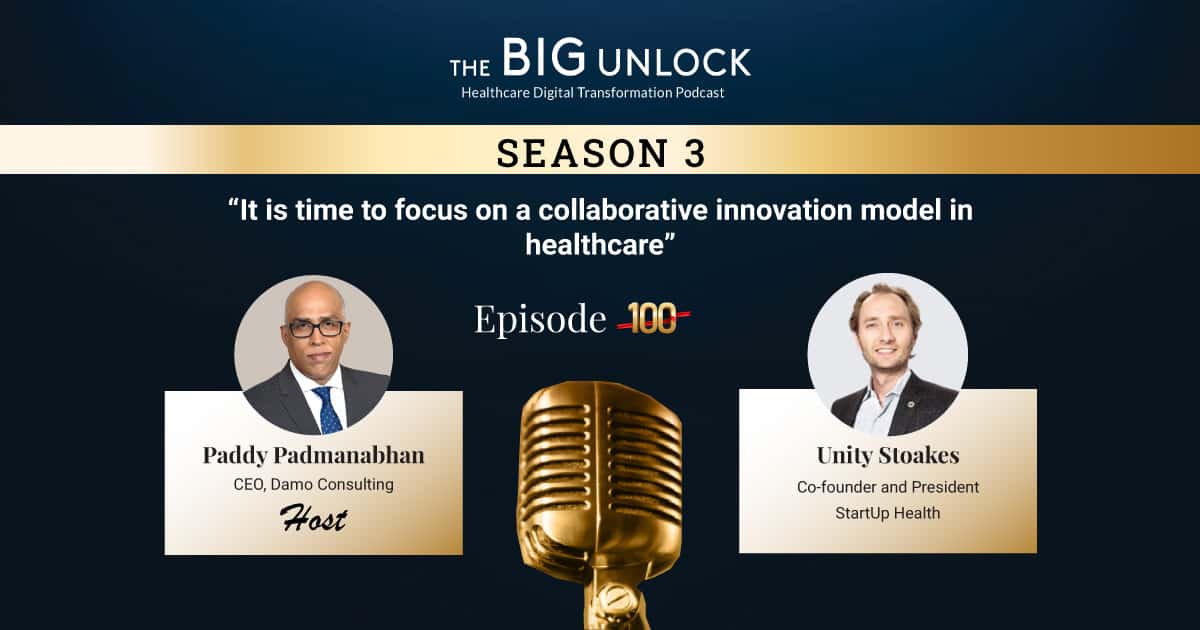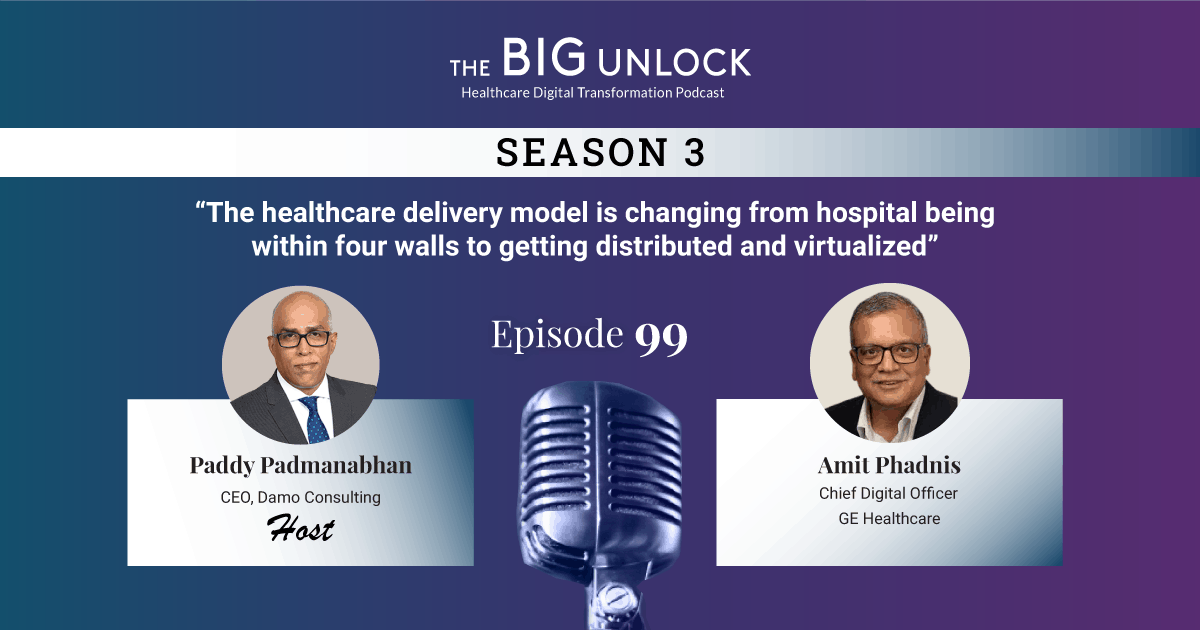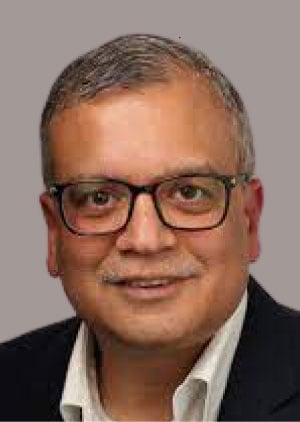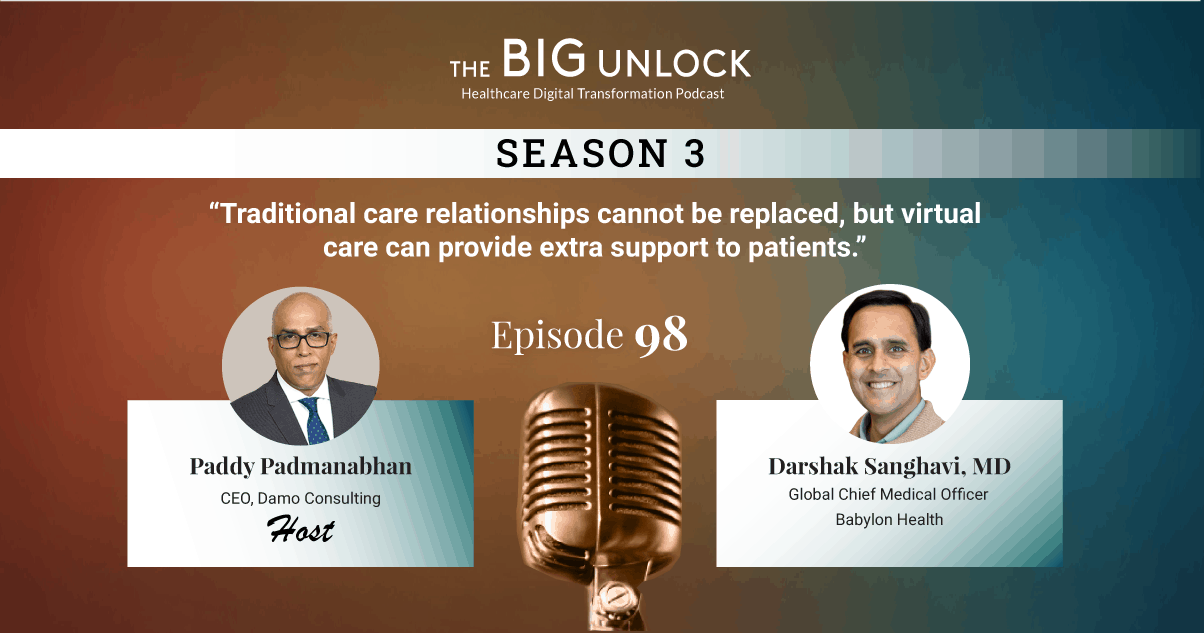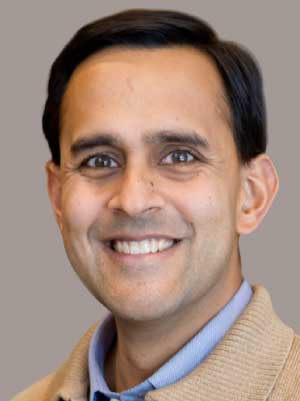Podcast with Unity Stoakes, Co-founder and President, StartUp Health
"It is time to focus on a collaborative innovation model in healthcare"
 Hosted by Paddy Padmanabhan
Hosted by Paddy Padmanabhan Share
In this 100th episode of the podcast, Unity Stoakes discusses about their life-long mission to improve people’s health and well-being worldwide and how the healthcare landscape has witnessed significant changes over the last ten years.
Unity maintains that by combining the powers of moonshot thinking, a transformer mindset, and collaborative communities, healthcare companies can reinvent the future of health. Health systems should lean towards early-stage innovation, experiment, and then really think about developing an innovation stack in the context of care delivery and better outcomes.
Unity advocates leveraging technology to build a cohesive health care segment where doctorpreneurs and clinicians can together transform organizations using the enormous capital and talent at their disposal. He also advises digital health start-ups to have a persistent and resilient mindset to thrive in the industry. Take a listen.
Note: StartUp Health has recently launched the StartUp Health Moonshots Impact Fund. For more details, visit here.
Show Notes |
||||
| 01:29 | About StartUp Health. | |||
| 03:44 | Can you talk to us about your new notion of moonshots? | |||
| 06:54 | Can you talk to us about the funding environment? | |||
| 12:44 | What's happening to all the startups who are raising all this money? | |||
| 16:38 | Can you talk to us about a couple of your success stories? | |||
| 20:10 | What do you think are the big gravitational forces that are holding back innovation? | |||
| 24:11 | What do your portfolio companies say about their challenges as they build their products? | |||
| 27:40 | What’s the competitive landscape looks like now? Can you comment specifically on big tech and their role in this emerging opportunity landscape? | |||
| 30:59 | If you had something on your wish-list for health care regulators, especially in the digital health context, what would that be? | |||
| 32:57 | If there’s one thing you wanted health systems to do to accelerate innovation? | |||
| 35:58 | What is your advice to the digital health founders? | |||
Q. Tell us about StartUp Health — the story and the one thing you’d consider a proud accomplishment.
Unity: My business partner, Steven Krein, and I co-founded StartUp Health ten years ago. We had a very basic concept that revolved around organizing a global army of what we call Health Transformers. These are the entrepreneurs and innovators reinventing or rebuilding the future of health. We thought, if we got enough of them together, it could transform or achieve some of the biggest health moonshots — big global challenges — of our time.
For the past ten years, we’ve been investing in and mobilizing a global army of entrepreneurs. We now have 400 companies from across six continents and 26 countries — all working on different aspects of health innovation in our portfolio — and we’ve mobilized this ecosystem and community of innovators to work on global challenges like delivering access to care to billions of people, reducing the cost to zero, ending cancer or even, curing diseases like Diabetes and Alzheimer’s.
But as I step back and reflect on what we’re most proud of, it’s just focusing on a vision around collaborative healthcare innovation. I think one of the great challenges of healthcare as an industry for the past 50 years or more has been its siloed nature. So, just focusing on a collaborative innovation model is ultimately what I’m most proud of and look forward to.
Q. Tell us about your new notion of Moonshots. What are these?
Unity: They’re connected to the UN’s Sustainable Development Goals around Health and Wellness and we set out to tackle 12 global health moonshots. Each of these can impact at least a billion people by 2040, and we expect to be working around delivering quality care to every human on Earth – note that there are five billion people without basic care right now — and reducing that cost to zero. So, rethink the business models around care the same way we’ve seen the tech world do with things like entertainment or travel or telecommunications.
We have a women’s health moonshot, a children’s health moonshot, a mental health and wellbeing moonshot and two years ago, we launched an addiction moonshot. More recently, a pandemic response moonshot was launched not just for COVID-19, but also to mitigate and manage future pandemics. We believe that all these moonshots are quite interconnected. For example, you can’t achieve longevity without focusing on curing disease or reprioritizing women’s health or children’s health. So, we take a very holistic integrated approach.
But the magic happens when you align a whole ecosystem and a group of innovators around a singular mission and then get them marching collaboratively towards it. Our thesis is that we can speed-up the innovation cycles and learn what’s working or not working. We can share that knowledge and those insights, tap into network effects and ultimately, speed-up progress, manage innovation cycles efficiently and more cost-effectively than ever done before.
Q. What about the funding environment? Twenty billion dollars in the first half alone and all indications are that this is going to be another blow-out year. What do you make of this?
Unity: A decade ago, when we started, there was less than a billion dollars being invested in digital health or early-stage Healthcare innovation. We’ve seen over $20 billion for the first half of this year, and after Q3, it’s closer to $30 billion. When you add a lot of the money flowing in globally, we believe that by the end of the year it will be closer to $40 billion. In some ways it’s exciting and surprising.
However, the big question we’ve had up until a pandemic or two years ago is — why isn’t more investment flowing into this sector when it’s a $10-13 trillion global market? In a lot of ways, we believe that there’s still not enough capital flowing in, even though it seems like we’re exponentially scaling.
There’re a lot of smart investors moving into the space in a lot of ways from outside of the healthcare market – SoftBank, Tiger Global, Sovereign Wealth Fund etc., not only healthcare companies but retail, consumer and technology, infrastructure, services, digital health, new diagnostics and med-tech and consumer health companies with direct-to-consumer business models, and everyone’s leveraging technology, data, design innovation, business model innovation. The scope is broad for what we’re seeing now. The past decade has been all about building ecosystems, attracting new streams of capital, bringing new innovators and entrepreneurs into the sector. And now there’s so many new entrants across sectors.
I would argue that Apple or even Dollar General have been doing a lot of interesting things over the years and they’re clearly becoming healthcare companies like some of the retailers — Walmart, Target, and Safeway. It’s just a really exciting time with some trends to watch out for especially with a new generation of innovation happening. I would equate it to being in the second inning of a wide, open market opportunity.
It’s an exciting time to be an entrepreneur and investor in this space as well as a strategic company thinking about their opportunity within the future of healthcare.
Q. There’s a lot of innovation and a Cambrian explosion of digital health startups but the landscape is highly fragmented and clearly not everyone will make it. What’s happening to startups who are raising all this money?
Unity: It’s a great question pointing to exciting trends of some of the newer companies – infrastructure companies –which, over the last 2-3 years, have been trying to be integrators of a very fragmented market. So, if you’re a health system, it can be really confusing when there’s a plethora of solutions trying to do business with you or provide some solution for your system.
But one of our companies, for example, Particle Health, is doing what Plaid did to the financial services market — created an integration layer, so, the financial services companies could plug into that. Particle Health is doing for the data layer something similar to what companies like Komura or Zeus have done — a platform approach that others can try to build-off of.
The tech domain has seen this for decades where Apple would have built a developer’s kit or an app store that others can build on. The same thing is now visible in healthcare. So, the fragmentation of the past decades has been good because there’s been thousands of experiments going on. I would equate this to 1990 for internet and web, when the business models were not clear. They were just figuring out this thing called eCommerce or CPM advertising models. It was very early and there was a lot of different innovation. Now, it’s clear there’s market opportunity, great innovation taking place and accelerating.
By developing new frameworks, things will hopefully speed up so others can start to build on top of these. That’s why the second inning is going to be even more exciting than what we’ve seen over the past 10 years. While there’s been a lot of exciting experimentation going on, what everyone’s looking for now is the impact — where are the results, where are the outcomes, how is this really helping patients or how is this really helping to reduce costs?
What we’re starting to see is like telehealth companies, which are demonstrating to a health system either how they can more efficiently or effectively deliver care during a pandemic or even post-pandemic. So, I believe, the outcomes of the next wave of innovation resulting from all these investments of the past decade, will start to have more quantifiable results.
Q. You’ve had a few significant exits, recently. Do share your success stories for a sense of what’s coming out of Startup Health?
Unity: I’m so proud of our 400 companies — our health moonshot companies. Some are familiar names — Devoted Health, City Block, Vertu Health. Most recently, Conversa was acquired by Amwell. Doctor.com was just acquired by Press Ganey. And then, we have an exciting blood diagnostics company out of Europe called Nightingale Health that went public on Nasdaq in Europe.
Getting back to your first question, I’m proud of the diversity of innovation that we have across our portfolio which spans region, country, business model and subsector. There’s a magic to that because when you cross-pollinate a big company with an innovative emerging company, you speed-up innovation. We saw this with Pfizer and BioNTech. I call it the Peanut-Butter-and-Jelly effect, where one-plus-one-equals-three or refers to creating something better. When we started a decade ago, it was just an idea, thesis, and a belief but now we’re tangibly seeing the fruits of our labor and the impact that these health transformers are making in very tangible ways in the market.
Q. Congratulations, on all those. Conversa CEO and Amwell’s have been guests here, so, it’s like I’m closing the loop with that story. I have two questions here — What about the gravitational forces that hold back Healthcare innovation? Also, despite some issues in healthcare – siloed data, the interoperability between various systems, the dominance of EHR vendors etc. — it’s interesting that health systems are getting into the act. What do you make of this?
Unity: The biggest challenge remains the siloed nature of healthcare, where everyone’s trying to protect their own sandbox, so to speak. However, as you start to expand beyond with new entrants coming in thinking of retail or tech companies as potential competitors rather than collaborators, structurally, one thinks that for decades there wasn’t enough talent coming into the space. A lot of the entrepreneurial talent was going to build just pure tech companies, photo sharing apps, social networks or going toward management consulting or Wall Street. Now, a lot of the best talent globally is coming into healthcare and that will make a significant impact.
Second, there wasn’t enough capital for early-stage investment and that’s starting to change. Now, there’s talent and capital. If we can break down the innovation and data silos and speed things up, that’ll be the next big thing.
One of the positives we’ve all learned from the global pandemic is really a mindset shift. There was an old framework that certain things around innovation had to take a certain amount of time or be impossible, perhaps. But when you do something like create a vaccine — that everybody thought would take multiple years — in less than a year and bring it to market, it shatters those frameworks and transforms mindsets. It’s really golden age of innovation potential for where we go from here because you’ve got the talent, capital, demand and the mindset shift of “How do we go bigger? How do we transform in a way that’s more significant than previously thought possible?”
The last big hurdle might be how to transform the regulatory frameworks so that it can keep pace with innovation. I am very optimistic about what we’ve seen even in the past 24 months, with how the structural elements that will speed-up innovation in the future have fundamentally changed in a post-pandemic world.
Q. What do your portfolio companies say about their challenges as they build their products, scale and grow sustainable businesses?
Unity: It’s interesting. I think it depends on the stage. I do think there is still a gap at the earliest stages of development. Let’s call it the pre-seed and seed stage where we’re seeing a lot of big $400 million rounds or $100 million rounds, or $67 million rounds. And there’s still a wide gap for the $500,000 rounds or $1 million round.
If you’re talking to the innovators that are just getting started, there still is a capital gap. That’s why, in the past year, we’ve seen multiple large early-stage pre-seed and seed stage funds, including the one just announced today from NFX Ventures, focusing just on early stage. The gap is really around capital.
However, the biggest challenge though, is really around a legacy mindset — around a notion — that the way things work, are the way things are going to be in the future. There’s lots of players within the legacy health care world that still have that framework, so, the opportunity is to demonstrate through real outcomes to basically prove to the market what’s possible.
Some tremendous things have happened over the past 24 months that are starting to bite away at this apple – a major multibillion dollar M&A activity with Teladoc and Livongo. And then, some regulatory, payment and reimbursement shifts have also happened recently, quickly for Telehealth. What these demonstrate to entrepreneurs, innovators and customers of those emerging companies is that the next decade will be different, way bigger and faster than what we may have thought just two years ago.
Q. What’s the competitive landscape like, now? Can you comment specifically on Big Tech and their role in this emerging opportunity landscape?
Unity: In many ways, every great company is trying to figure out how to become a health care company, be it automotive, transport or travel companies. It’s an exciting opportunity because a bunch of new entrants are coming in. The tech world may see this as competitive but really, there’s opportunities for collaboration. See how Amazon has entered this space or Apple versus Google. It’s all very different and they’re each attacking different aspects of Healthcare innovation to demonstrate the vastness of the potential and the opportunity. Now, I don’t think technology companies want to suddenly become health systems and health systems’ core focus is not on becoming technologists. So, alignment of their unique abilities will make great potential for collaborations. That’s what we’re starting to see.
One of the misnomers is, there’ve been many failed experiments over the years, from technology companies that were in the third, fourth or fifth iteration of Google Health or Amazon. But if you’re a trillion-dollar market cap company, there’re only a few ways to grow in future and health care is one of them. So, the real opportunity is to really lean-in into collaborative innovation and focus on the core that you may bring and that’s irrespective of whether you’re a startup or emerging innovation health care company or a great health system that has care delivery as your core. What can happen when you start to merge great technology players in with that will be most interesting.
Q. With regard to regulators and the regulatory landscape, if you had something on your wish-list for health care regulators, especially in the digital health context, what would that be?
Unity: If I could wave a magic wand, in terms of regulation, it would be to rethink the future frameworks with the pace of true innovation, in mind. This won’t erode the core of providing safety but will enable a rethink on the guidelines and frameworks in a way that exponential innovation can exist within the framework.
There are ways to do that by developing guiderails or innovation regulatory innovation kits that early-stage companies can build on. This has been seen in cases of drug development, where there are Phases 1, 2, 3 clinical trials and these take you through a process. If we can do the same with health tech innovation or digital health innovation and have frameworks that can move very quickly but give innovators a toolkit to work with at different stages of development, that would also be interesting.
Q. If there’s one thing you wanted health systems to do to accelerate innovation and enable your portfolio companies, what would that be?
Unity: I would study the concepts around the innovator’s dilemma and embrace transformation. There’ve been so many exciting developments around care delivery over the past few years and these new emerging companies — whether One Medical or others, that are working on full-stack innovation, integrating technology and data and thinking about the experience in a new way – are refreshing. The health systems of the future, then, should lean-in to early-stage innovation, experiment in tests and then, really think about how to develop what we in the tech world would call, an innovation stack within the context of care delivery and better outcomes.
I’d also focus on business model and design innovations and other types of frameworks that can be very innovative but may really not have anything to do with pure tech.
Also, I think one of the really exciting assets that so many health systems have, are their clinicians. And one of the great trends we’ve seen over the past few years is what we like to call the rise of the Doctorpreneur. These are clinicians that work with patients, serve patients, but they’re also innovators and they know the problems and they’re becoming entrepreneurs, themselves. So, I think leaning-in to those doctorpreneurs and clinicians within your teams, within your health system can be invaluable for transforming your organization.
Q. Finally, what’s your advice to the Founder who is entering the digital health landscape today?
Unity: It’s a long journey so, resilience and having a long-term mindset towards collaboration while navigating the daily ups and downs and challenges will help you be successful.
We hope you enjoyed this podcast. Subscribe to our podcast series at www.thebigunlock.com and write to us at [email protected]
Disclaimer: This Q&A has been derived from the podcast transcript and has been edited for readability and clarity
About our guest
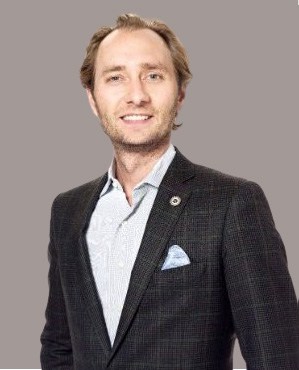
Unity Stoakes is on a life-long mission to achieve the impossible: to improve the health and wellbeing of everyone in the world. By combining the power of moonshot thinking, a transformer mindset, and collaborative communities, he believes anything is possible. In 2011, Unity co-founded StartUp Health with Steven Krein, his business partner of more than 20 years, to invest in a global army of entrepreneurs, called Health Transformers, to embark on one extraordinary crusade: to achieve health moonshots, each of which can improve the lives of at least one billion people.
Unity has been a tech entrepreneur since the mid-nineties, previously co-founding OrganizedWisdom and helping build The Privacy Council, Middleberg Interactive, and Webstakes.com/Promotions.com, which he helped take public on NASDAQ with his business partner of 20 years, Steven Krein.
Unity has appeared on Bloomberg TV, CNBC, CNN, NPR, and USA Today, and speaks to entrepreneurs, world leaders, and CEOs around the world about the future of health. He is the publisher of StartUp Health Magazine and co-host of StartUp Health NOW, a weekly web series about Health Transformers.
Unity grew up on a farm in Oxford, Iowa, went to Boston University and currently lives in Berkeley, CA, with his wife and two young kids.
Recent Episodes
About the host
Paddy is the co-author of Healthcare Digital Transformation – How Consumerism, Technology and Pandemic are Accelerating the Future (Taylor & Francis, Aug 2020), along with Edward W. Marx. Paddy is also the author of the best-selling book The Big Unlock – Harnessing Data and Growing Digital Health Businesses in a Value-based Care Era (Archway Publishing, 2017). He is the host of the highly subscribed The Big Unlock podcast on digital transformation in healthcare featuring C-level executives from the healthcare and technology sectors. He is widely published and has a by-lined column in CIO Magazine and other respected industry publications.

